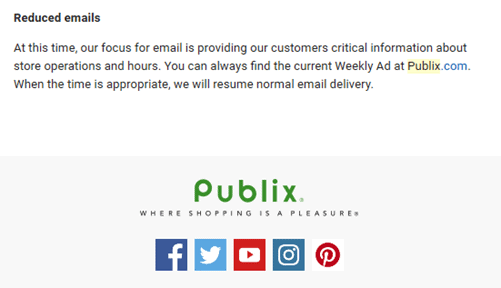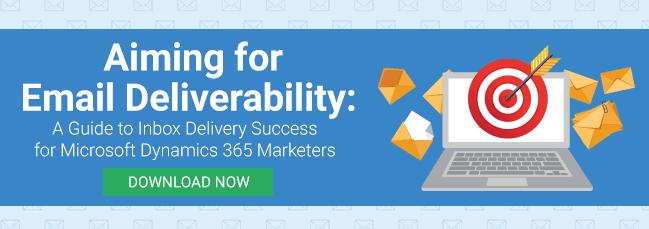What do our subscribers need from us right now? As we collectively navigate the ongoing COVID-19 pandemic around the globe, that’s the most important question that brands can ask before they plan, create or send email marketing questions. Businesses also must accept that sometimes during this crisis the answer to that question will be “nothing” and be willing to temporarily give customers some space in their inbox as they focus on other priorities.
When the answer to that question is something other than nothing, however, marketers can’t continue with email marketing as usual in a world that is anything but business as usual. The “new normal” requires a new email marketing approach. As you plan your upcoming campaigns, try these five tips for successfully navigating email marketing in the face of a pandemic:
1. Segment your lists. As brands have rushed to tell their audiences about their response to COVID-19, segmentation hasn’t always been top of mind. We can see this evidenced in the COVID-response emails that we all have received from companies we haven’t done business with in years and maybe even some that we never purchased from in the first place. Always take the time to segment your lists and consider which audiences need which messages. Avoid sending to unengaged subscribers in your database. How you define unengaged will vary according to your business, but six months to a year of no engagement can often be a good guide. A re-engagement campaign would best serve these subscribers, but now is not the time; save that for a later, more appropriate date.
2. Strike the right tone. While it’s important to be on-brand in all communications, it is critical for brands to understand and appreciate the general global mood. It is a somber time. People are worried about the pandemic and uncertain about the future. And it’s impossible for marketers to know how or if their individual audience members are directly impacted by the virus or the economic fallout surrounding it. Therefore, striking the right tone in your email marketing is more important than ever. For organizations that typically have more levity and humor in their brand voice, this may be more of a challenge. And it may be for brands that are more buttoned up in their tone as well. Right now, your recipients want honest, direct communications. Be conversational and remember that your emails should sound like there is a human on both sides. The header from a Delta Air Lines email below shows a great example of a brand humanizing their email marketing and being more personal that pre-pandemic. The Ed in “Your Update From Ed” is Delta’s CEO, Ed Bastian, and the email that follows is a letter from him that details the company’s current safety measures, refund policies and philanthropic endeavors.
3. Purpose matters. Why are you sending this email? Do you have new information to provide your customers? If you don’t have anything new to say, an email isn’t necessary. Your customers don’t need another email documenting your company’s business continuity plans, for example, unless they have changed. While this may change the normal frequency of emails that you send to customers, such a shift is perfectly acceptable and even appreciated in these times. The key is to communicate any changes in your regularly scheduled emails to your subscribers, as we see in a snippet from an email from Publix below. In an email that provided updates on the supermarket chain’s refund policy and shopping hours, they informed subscribers that they wouldn’t be sending their usual weekly ad emails. This can help you avoid confusing your subscribers or making them feel like they have missed something, particularly for emails that are sent on a regular cadence.
4. Communicate change in detail. Brevity has been a guiding principle for most email marketing messages for some time now. However, these are not usual times, and you may often find that a longer email is in order. Don’t let the hesitation of longer emails inhibit you from communicating necessary details to your customers. Instead, use tactics like subheadings, bullet points and bolding to help break up long blocks of text. Be sure that you address the things you do know and the things that you don’t. Anticipate the questions that your subscribers may have. And even if your answer is one of uncertainty, show that you’re thinking about it. For example, a business might not know when their brick and mortar locations will reopen, but while communicating the ways they are currently conducting business, they can say when they will re-evaluate such openings or if they will be monitoring government guidelines.
5. Meet regularly. Your team is likely working remotely but be sure to still meet regularly – more often than usual even – to discuss your email marketing plans. The world today is rapidly changing. Sometimes, what was true a few hours ago may not be so now. Be prepared to adapt your email marketing plans in response. Do emails that you currently have planned or scheduled still need to go out? Does a different message need to be sent? Be prepared to change course in your messaging so you can avoid any missteps and always communicate the latest news to your subscribers.
Finally, remember that while the headlines today can be overwhelmingly bleak, there is still good news to be had. There are uplifting stories of individuals, communities and businesses rising to the occasion and helping others. Where possible, appropriate and on-brand, do your part to share some hope and good news in your email marketing.











